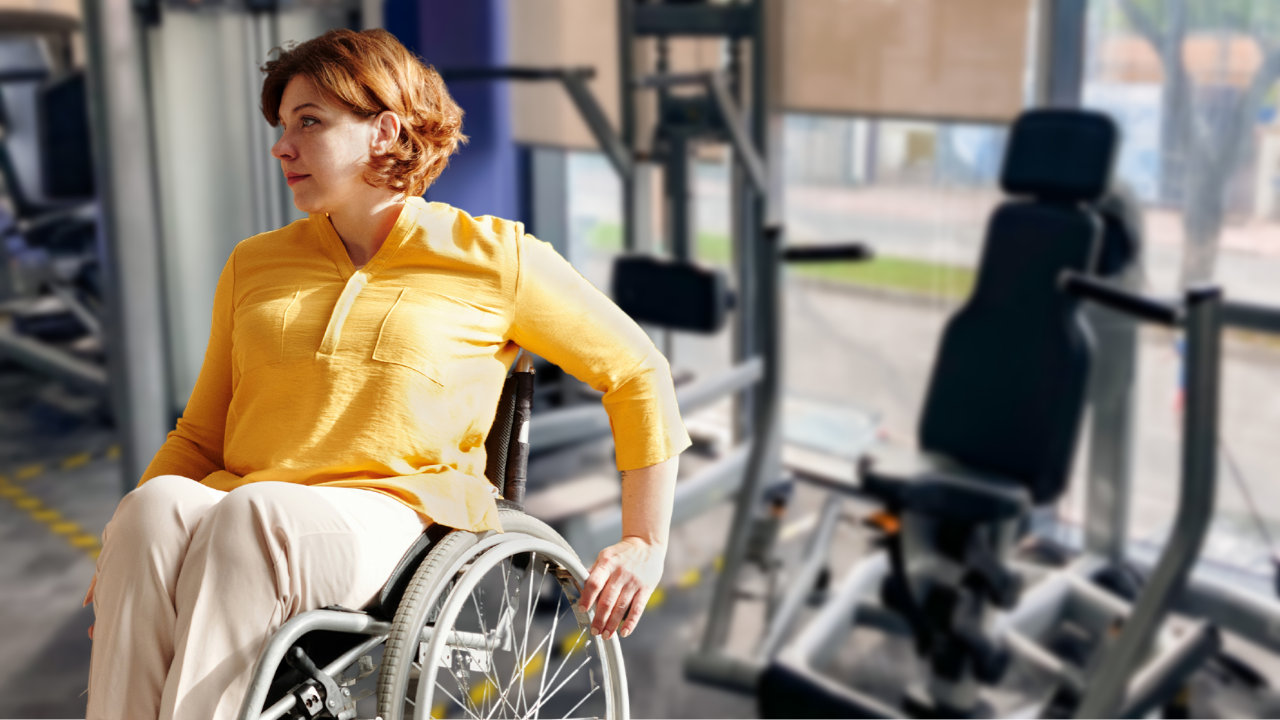There’s a fine line when designing exercise programs for people living with a disability. It’s a balancing act our Exercise Physiologist are are constantly working on with our clients at Range of Motion.
On one hand, we need to make sure the exercise is something they can easily do. If it’s too complex, they’re not likely to do it. On the other hand, if it’s too easy, it can limit how effective that exercise is.
And we like to manage effectiveness of exercise based on how well it helps the person improve their ability to complete activities of daily living. If the exercise doesn’t make them more functional and independent in life, we consider it ineffective.
Occasionally, we see health and fitness professionals choosing overly simple or basic exercises. And while any exercise is great, we feel like sometimes they are ‘pigeon holing’ individuals with a disability, and actually holding back their progress.
And that brings us to exercise machines.
You know the kind, you stick a pin in a stack of weights to choose how much you’re lifting. Then you push or pull the handles of the machine to lift the weights. The thing is, the machine chooses where you move those weights. This is what we call ‘fixed range of motion’. Every single repetition looks the same because the machine forces you into a certain movement pattern.
Now again, we cannot state strongly enough – this is absolutely great for some people. But for many others, by locking your movement into that shape, you’re missing out on a lot of benefits of resistance training (lifting weights).
Because remember, we want exercise to improve your ability at life. Exercise shouldn’t be about getting better at exercise, it should be about getting better at life. It shouldn’t be about being better at a leg extension machine, but getting better at standing up from a chair. Not about improving your chest press, but about being able to get up off the floor if you have a fall.
Because machine weights strengthen a very fixed range of motion, they have limited carry over to other movements. And because the machine chooses the path for you, you don’t need to use any stabilising muscles. And it’s these little stabilising muscles that are so important to improve functionality and independence in every day life.
So, where possible and appropriate, we strongly recommend FREE WEIGHTS for individuals that are living with a disability. Free weights are particularly useful and important for autism, cerebral palsy, spinal cord or brain injury, intellectual disability, down syndrome, hypermobility or low muscle tone.
With free weights, a machine doesn’t choose the path for you, you are required to control and stabilise the weight yourself.
Here are the main benefits of free weights over exercise machines with fixed weights.
- Free weights make you stronger.
- Free weights involve the small stabilising muscles to help keep your joints healthy.
- There is a better carry over from free weights to activities of daily living.
- Free weights offer greater improvements to balance, important for fall prevention.
- Free weights allow the individual to develop a new skill, important for forming collections in the brain.
- Free weights help reduce strength imbalances between the left and right sides of the body.
- Free weights have been shown to have a more positive effect on pain levels.
- There’s a greater sense of achievement that comes from learning something new.
And here are some substitutions we’d recommend, where the individual is able to complete them:
- Swap leg extensions for squats.
- Swap hamstring curls for deadlifts.
- Swap chest press for bench press or push-ups.
- Swap machine rows for some sort of barbell or dumbbell row.
Now of course, as we’ve mentioned a few times, the primary aim here is to get people exercising. And while free weights are the gold standard, they’re simply just not possible for a lot of people. For these people, exercise machines are nothing short of life-changing.
But we do think they’re overused, and we’ve had tremendous success at Range of Motion teaching individuals with a disability how to move and get strong with free weights.
Range of Motion, in Osborne Park, provides Exercise Physiology Services for NDIS participants. An exceptionally high standard of one-on-one expert care, in a safe, friendly environment. Learn more about our exercise programs for NDIS participants.
Spennewyn, Keith C Strength Outcomes in Fixed Versus Free-Form Resistance Equipment, Journal of Strength and Conditioning Research: January 2008 – Volume 22 – Issue 1 – p 75-81





